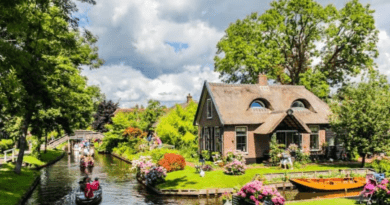Now You see: India’s contemporary temples that reinvent cultural architecture.
These Indian temples demonstrate a departure from the traditional design. These contemporary marvels will astound you, from the Shiv Temple in Wadeshwar to the Bahá’í House of Worship in New Delhi!
India’s temples are among the most striking examples of cultural architecture in the world, with their perfect fusion of spirituality and design. These places of worship, which are Hindu, Jain, and Buddhist, have long been more than just repositories of knowledge and spirituality, spanning generations and faiths. In addition, they are the best architectural marvels of their kind, inspiring awe and devotion in both devoted followers and amazed onlookers.
Such as the 11th-century Brihadisvara Temple in Thanjavur and the Odishan Konark Sun Temple, which symbolizes the essence of Kalinga culture, the medieval era’s architectural style The unmatched inventiveness of Indian civilization is demonstrated by the Kandariya Mahadeva Temple in Khajuraho, with its beauty in sandstone and Nagara architectural elements; the Mahabodhi Temple Complex in Bodh Gaya; and the Virupaksha Temple in Hampi, which stands as the apex of the artistic and cultural achievements of the Vijayanagara period.
Considering the rich and legendary history of India, one would question if architects of the twenty-first century have interestingly reworked this architectural tradition and, if so, how their current expression looks.
Time will tell if temples built in our day can make a similar claim to posterity, but in the meantime, here is a list of five examples of modern temple architecture that aims to provide a modern touch to a style known for its traditional forms and architectural beauty.
Balaji Temple, or the Temple of Steps, Nandyal:
Tucked away in the parched landscape of Nandyal, Andhra Pradesh, the Temple of Steps, or Balaji Temple as it is called locally, is dedicated to the veneration of water and the act of worshipping it. The temple is situated on a 2.5-acre plot of land and was commissioned by Anushree Jindal of JSW Cement.
It was created by Mumbai-based architects Sameep Padora & Associates around the kund (waterbody), which is surrounded by cool farms and cotton fields. The banks of the kund were repurposed as a meeting place for spiritual seekers and as a source of groundwater that nourishes and replenishes the nearby farmlands. Padora deviates from the traditional architectural style while paying homage to the topology and archetypes of historical temples.
In an abstract temple design that is happier. The temple’s design is based on the Tirupati temple in Tirumala, which was built in the tenth century and honors the same deity. It features shrines for both Balaji and Varahaswamy next to a pushkarini (water tank).
Pune’s Tejorling Radiance Temple:
Through its simple construction, Tejorling Radiance Temple is a unique structure that honors its heritage while also attempting to incorporate modern features into the socio-historical history of its region. First and foremost, the temple’s architecture, which was created in 2018 by Karan Darda Architects, pays homage to Lord Shiva, the resident god and an embodiment of pure consciousness .
The temple’s architecture has a lyrical movement as you go around it because of its pyramidal design and swift transformation from a square base to a soaring triangle. Architect Karan Darda, who is based in Pune, says the objective was to construct a structure that looks to be both motionless and dancing, representing simultaneously Lord Shiva’s cosmic dance and his contemplative state.
Tejorling Radiance Temple has a garbhagriha and a naturally formed mandapa made of tree canopies, just as many other Indian temples do. The fact that “the gopura or the shikhara are pyramidal in shape, and they are even further simplified here” is noticeable nonetheless.
Temple of Shiv, Wadeshwar:
This distinctive Shiv Temple in Wadeshwar, Maharashtra, was created through a cooperative effort (the concept of “shramdaan,” or self-building) between architects Sameep Padora & Associates, the temple’s priest, and the locals. It is shaped by the people’s devotion to their favorite god and their collective spirit. The architects used local basalt stone that could be obtained 200 meters away from the temple location for the building.
The final design, whichh adheres to the rules of traditional temple building, wistfully conjures up the silhouette of the Shikhara temple.
The location has a classic mandapa (pillared hall) and an outside area that is encircled by thick vegetation. The garbhagriha, the most sacred section of the temple, receives sunlight through a specific frame that supports the top of the temple, known as the ‘kalash,’ which is composed of eight unique metal composites.
New Delhi’s Bahá’í House of Worship (The Lotus Temple) :
The Lotus temple in New Delhi, which welcomed visitors in 1986, is a magnificent ode to the newest religion in the world. Inspired by the half-opened lotus, an Indian emblem of purity and spirituality, the modernist Bahá’í House of Worship was created.
According to reports, the architect, Fariborz Sahba, who is Iranian-American, traveled extensively throughout the Indian subcontinent researching our history and culture before devising a design that would, in his words in an interview, “integrate the spiritual heritage of this subcontinent.
The inner and outer shells are covered in an astounding 10,000 square meters of Greek marble that was sculpted in Italy and secured in place with specially made stainless steel. The interior space is kept cool by the nine pools that ring the superstructure and the ingenious ducts that give devotees relief, all while keeping in mind Delhi’s notorious summers.




